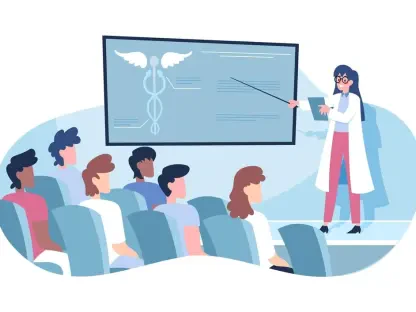Academic Medical Organizations (AMOs), comprising medical schools and academic teaching hospitals, grapple with a complex ecosystem dedicated to their tripartite mission of medical education, research, and clinical service. These multifaceted institutions face a unique blend of operational challenges and mission-focused demands that necessitate strategic approaches for optimization and sustainability.
Complex Operating Environment
The operating environment of AMOs is inherently intricate, characterized by the diversity of multiple clinical and research departments, each cultivating distinct operational cultures and environments. From urban to rural settings and governmental to privately-run institutions, these organizations must navigate and harmonize the disparate elements that influence their operational efficiency and mission effectiveness. Integrated into the larger healthcare and educational frameworks, the variability in organizational structures adds another layer of complexity that requires tailored management strategies.
Economic and Operational Pressures
Economic and operational pressures are significant hurdles for AMOs, with rising operational costs and flat or declining revenue streams aggravating financial sustainability. The competitive landscape for funding further complicates their financial health, as does the shifting regulatory environment and the emphasis on value-based care reforms. These economic realities demand that AMOs continuously innovate and adapt to maintain their viability, ensuring that they can fulfill their educational, clinical, and research missions.
Demand vs. Capacity
A critical challenge for AMOs is the disproportionate demand for clinical services compared to the available capacity of providers and healthcare systems. This imbalance impacts the ability of these organizations to effectively balance their tripartite mission. The need for enhanced capacity planning and resource allocation becomes apparent, requiring strategic adjustments to ensure that educational and research activities do not suffer in the quest to meet clinical demands.
Maturity Model
To address these complexities, the AMO Maturity Model provides a structured framework for assessing an organization’s overall maturity across nine domains, including governance, culture, change management, recruitment, and financial management. This model enables AMOs to gauge their current state and identify areas requiring improvement. A mature AMO is better positioned to navigate operational challenges and optimize its mission performance effectively.
Mission Performance Optimization
Optimizing the performance of AMOs’ missions involves the regular review of mission operating profit and loss statements, the standardization of performance metrics, and diligent faculty effort allocation reporting. By focusing on these areas, AMOs can ensure that each aspect of their mission is operating at peak efficiency. Regular assessments and transparent reporting mechanisms are key to maintaining alignment with organizational goals.
Clinical Mission Metrics
Critical metrics for evaluating the performance of the clinical mission include net margin per physician, patient encounters, support staff expenses, and utilization rates. Effective clinical operations are essential for generating the revenue that supports teaching and research endeavors. Consequently, the ability to monitor and manage these metrics is vital for the overall sustainability and growth of AMOs.
Teaching Mission Metrics
In the face of funding challenges, maintaining excellence in the teaching mission necessitates tracking metrics such as program accreditation, match rates, board certification pass rates, and student satisfaction. These indicators help ensure that AMOs can continue to attract and produce top-tier medical professionals, thereby supporting the long-term success of their educational objectives.
Research Mission Metrics
The research mission, often hindered by stagnating federal funding, relies on metrics like faculty FTEs, peer-reviewed publications, and wet lab space utilization to measure productivity and financial viability. By closely monitoring these metrics, AMOs can better manage their research activities, fostering innovation while ensuring sustainable growth.
Overarching Trends
Uniformity in aspirations contrasts with the diversity in operations among AMOs, influencing how they achieve their goals. Financial sustainability remains a pervasive concern, with rising costs and uncertain revenue streams necessitating robust financial management and innovative funding strategies. Effective faculty allocation is paramount, ensuring that efforts are strategically distributed across clinical, teaching, and research missions to maintain balanced performance.
Summary of Main Findings
Academic Medical Organizations (AMOs), which include medical schools and academic teaching hospitals, operate within a complex framework guided by their threefold mission: medical education, research, and clinical service. These diverse institutions encounter a unique blend of operational hurdles and mission-focused requirements that demand strategic approaches for successful optimization and long-term sustainability.
AMOs are essential for training the next generation of healthcare professionals, pushing the boundaries of medical research, and providing top-notch clinical care. Yet, the convergence of these missions means that they must balance educational needs, cutting-edge research initiatives, and patient care services seamlessly. Navigating these multifaceted responsibilities is no small task, requiring acute attention to resource allocation, fiscal management, and strategic planning.
In addition, the landscape of healthcare is constantly evolving, influenced by technological advances, regulatory changes, and shifting patient demographics. AMOs must stay adaptive, continually revising their strategies to meet new challenges and leverage emerging opportunities. By prioritizing collaboration, innovation, and efficiency, these institutions strive to thrive within an ever-changing environment.









